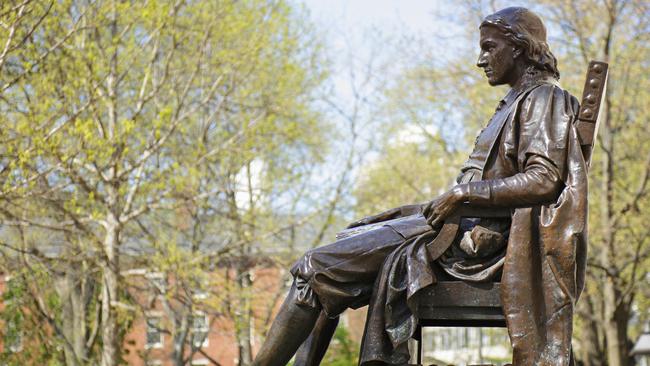Several Ivy League unis no longer release their acceptance rates
As more students clamour to go to university, America’s Ivy League is becoming reluctant to publicise how few applicants it accepts.

Some of America’s Ivy League universities are suddenly shy. Far from trumpeting each year how low their acceptance rate is – thus underlining how hard it is to get in and how exclusive they are – three of the eight universities in the exclusive group are withholding the information this year.
Some Ivy League admissions officers say that drawing so much attention to how few candidates made the cut is doing more harm than good, ratcheting up panic among high-school students and their parents and perpetuating a myth that it is nearly impossible to get into a good college.
“We’re focusing not on how hard we are to get into but on who these young people are that we chose,” said E. Whitney Soule, admissions dean at the University of Pennsylvania.
Princeton and Cornell universities also no longer share detailed admission figures after informing applicants of their results.
“We know this information raises the anxiety level of prospective students and their families and, unfortunately, may discourage some prospective students from applying,” Princeton wrote in a statement on its admissions website explaining the change.
It is a marked shift from a standard annual game plan in which all eight Ivy League institutions – and scores of other well-known schools – publicly share figures for how large the applicant pool was and how few of those hopeful students actually made the cut. Most typically issue news releases, highlighting their single-digit acceptance rates.
This year Harvard said it had admitted 3.2 per cent of the 61,220 people who applied to join the fall 2022 class, edging down from 3.4 per cent last year.
Yale and Brown also reported record-low acceptance rates for this year, at 4.5 per cent and 5 per cent, respectively. Columbia and Dartmouth roughly tied last year’s rates of 3.7 per cent and 6.2 per cent.
The reticence of three of the eight Ivys came as the number of Americans applying to universities jumped sharply.
Through to mid-March the widely used Common App – an undergraduate college admission application – received 6.64 million applications, a 21 per cent jump from the 2019-20 school year.
There were 1.18 million applicants, an increase of 14 per cent. Highly selective universities – those admitting less than half their applicants – reported the biggest increases in applications. One factor explaining the increases is that many schools made test-score submissions optional during the pandemic.
There is also a longer-term trend at play: high-school students with high aspirations see the statistics from prior years and, concerned about getting in, try to hedge their bets by applying to more schools. The pools continue to grow; acceptance rates continue to tumble; the cycle repeats.
Harvard, Yale and other Ivies received an unprecedented number of applications last year and near-record figures for the early-admission deadline of the current cycle.
Stanford University in 2018 stopped reporting its admission data, saying it wanted to de-emphasise the perceived value of low acceptance rates, though other schools have been slow to follow suit.
About a year ago, Akil Bello, senior director of advocacy and advancement at FairTest, a non-profit that advocates for more limited use of standardised tests, began using the term “highly rejective” to describe some of these schools, rather than highly selective.
Mr Bello said his aim was to cast the low acceptance rate in a different light, one that wasn’t worthy of crowing about in a news release.
“I was challenging the notion that the statistic of admission rate was a positive indicator,” he said. “That’s really all it is. It’s a rejection rate.”
Ms Soule, from Penn, said the goal wasn’t to make the admissions process less transparent.
Schools still do post admission figures publicly, in the Common Data Set online and in reports to the Education Department, though there is a time lag before those are available.
At the time of admission, she said, the focus should be on the students who are getting in and what about them that caught the attention of admissions officers.
That is more useful to prospective students than a slight increase or decline in annual acceptance rates, she said.
“If others follow along, that would be great,” Ms Soule said.
“This is the right way for us to celebrate those we’ve admitted.”


